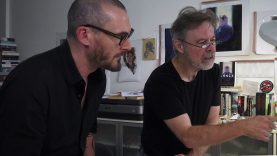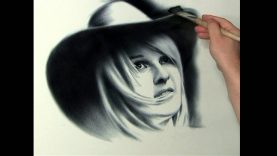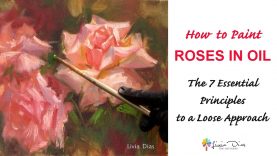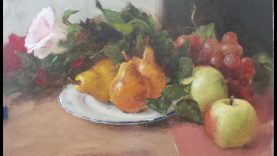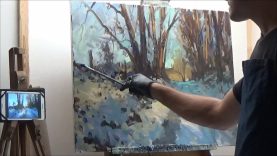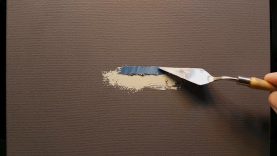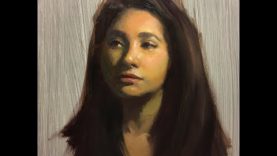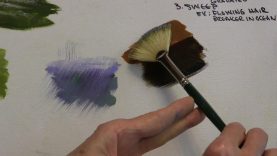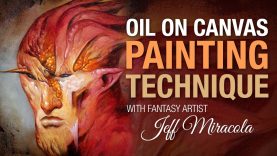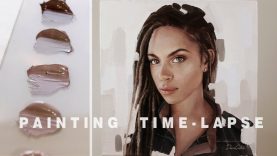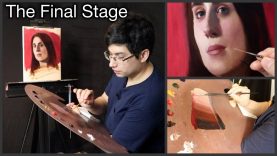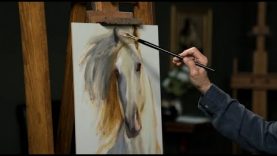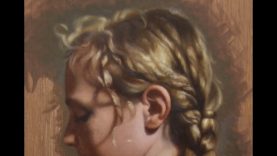Techniques: Wet on Wet, Alla Prima, Impasto and Drybrush
http://art.webartacademy.com/join-the-club
Oil Painting Techniques
Some Other Oil Painting Techniques
Wet on Wet — Alla Prima
“Alla Prima” technique is when oil paint is applied in wet on wet layers. Ala prima translates from Italian as “at first attempt”. This technique is great for painting live models or working ‘plein-air’ (painting outdoors). The artwork can be worked on in one or several sessions, but has to be finished before the first layer is dry.
This painting technique was developed in the mid-19th century, after commercially produced oil paints in tubes become available. Alla prima was used by impressionists like Claude Monet and Vincent van Gogh, realists like John Singer Sargent and Robert Henri, and many other fine artists.
Alla prima can be combined with the layered indirect method. When the first wet-on-wet coat is dry, finishing touches can be done in glazing.
Drybrush
Drybrush is a painting technique in which a relatively dry paintbrush holds a small amount of oil paint without any medium. Drybrush strokes have a characteristic scratchy appearance that lacks blended smoothness of a usual oil painting. Brushing over or blending drybrush strokes, while the previous layer is wet should be avoided to preserve the distinctive look of the drybrush technique.
Impasto
Impasto is a painting technique when paint is applied very thickly. It usually has texture with visible brushstrokes or paint knife marks. Using this technique, some artists mix paint directly on the canvas.
Impasto surface reflects the light in a certain way, providing the artist more means to express the artwork appearance.
The old masters like Rembrandt and Titian often used impasto to depict heavy clothes or jewels. Modern artists like Vincent van Gogh used it for artistic expression.
Varnishing an Oil Painting
Oil paintings can be varnished to protect them from environmental pollution. A painting that is to be framed under glass may remain unvarnished.
A layer of varnish evens out the appearance of painting, it makes it equally gloss, matt, or satin. Matt varnish looks clearer if the first layer was the same make of gloss varnish.
There are a wide range of varnishes available from various manufacturers from any well-stocked art supply shop.
The varnish should be applied on a completely dry painting. It takes about six months to a year until an oil painting is dry, or even longer for impasto paintings.
Varnish should be removable so it can be replaced in case of discolouration or becoming dirty. If an artist would like to re-paint or correct a painting after it has been varnished, the varnish layer should be removed first; it is not advisable to paint over the varnish layer.
Before varnishing the painting has to be cleaned. Varnish should be applied with a quality varnishing flat bristle brush, with the painting is flat, from one edge of to another in parallel strokes in the same direction. When the first layer is dry, second layer of varnish should be applied at the right angle to the first. The whole painting must be covered in one go. After about 10 minutes of completing the second layer, the painting can be lean against the wall facing inward to dry.
We hope you have found this oil painting guide useful.
In case of any oil painting related questions, please send us your message from the contact page on http://art.webartacademy.com and we will be happy to assist.
To your creative success,
Vladimir London and Natalie Richy
http://art.webartacademy.com/join-the-club
Oil Painting Techniques



